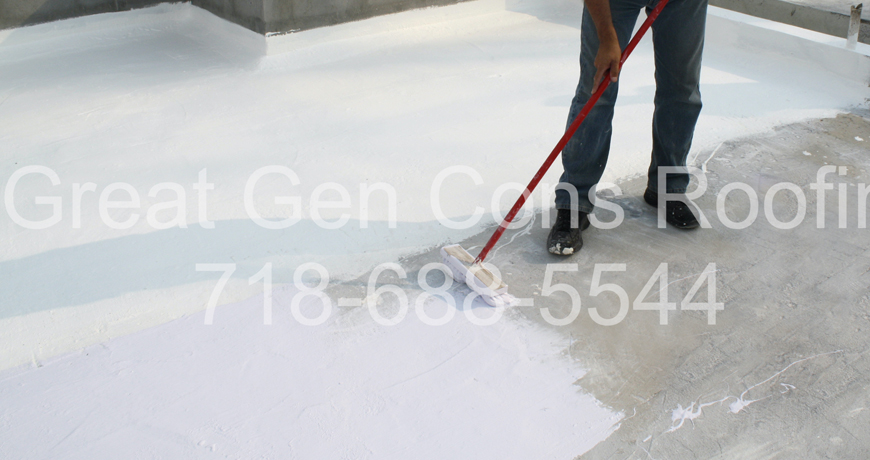Liquid waterproofing contractors in Bronx, Yonkers & Westchester County NY

Liquid waterproofing is the method of making a surface water resistant in particular circumstances by applying a liquid coating to it. The liquid coatings, whether single-or multiple constituents, are easy to apply and provide enduring protection to wood, concrete and other surfaces.
We have been offering waterproofing services for buildings in Bronx for 20 years.
Liquid waterproofing's ability to infiltrate hard-to-reach and rough surfaces as well as easily coat items with multifaceted, detailed geometries have long-drawn-out the range of items and surfaces that can be protected against erosion and other problems caused by exposure to water.
Benefits of Liquid Waterproofing
Stress-free application
This product is enforced like any other paint, with brush, roller or spray gun. It can also be easily used to domed or steeply inclined roofs.
High Flexibility
On surfaces such as balconies with direct contact to sunlight, thermal expansion is a problem that affects products for the waterproofing. Flexibility of liquid membranes halts cracks and other defects that may have adverse effect on their quality.
Productive long life
Waterproofing properties prolong the life of surface where applied without decreasing their effectiveness. In fact, regular maintenance is not required as with other solutions. These advantages are linked with its high resistance to weathering, ageing and ultraviolet radiation.
How to Apply Liquid Waterproofing
Select suitable primer for particular place
Each surface comes with its own features. You need to select the most suitable materials for your waterproofing needs. If it’s your roof, the material will be enduring the harsh weather changes. For external and internal walls or basements, the liquid waterproofing material will be different.
Compatibility of materials
The practical features of the liquid membrane must be taken into consideration so as to make sure that it will support the weight of the covering. The materials must be well-suited. For example, tile cannot be installed to cover a liquid membrane if it is not resistant to cement alkalis, as it would degrade and eventually destroy it. In addition to this factor, during application of the system, damage to the membrane must be prevented when applying the covering. This could occur when applying mortar with a trowel, if the liquid membrane is cut.
Insulation capability
The insulating properties of liquid waterproofing membranes are not features of their composition; i.e. they do not depend on whether they are acrylic, polyurethane or any other component. These compounds possess no key insulating properties. This potential advantage hinges on the pigment technology connected with colors.
Application requirements
Another central part is to recognize the conditions under which application of each membrane is recommendable. For example, normally, there are restrictions due to low temperatures. Moreover, application on surfaces with extreme insolation can be perilous.